Mesmerizing Cane Corso`s Blue Eyes: Exploring Their Mystique!
As we step into the enchanting world of Cane Corso “blue eyes,” we explore the reasons behind this astonishing dog breed`s physical trait.
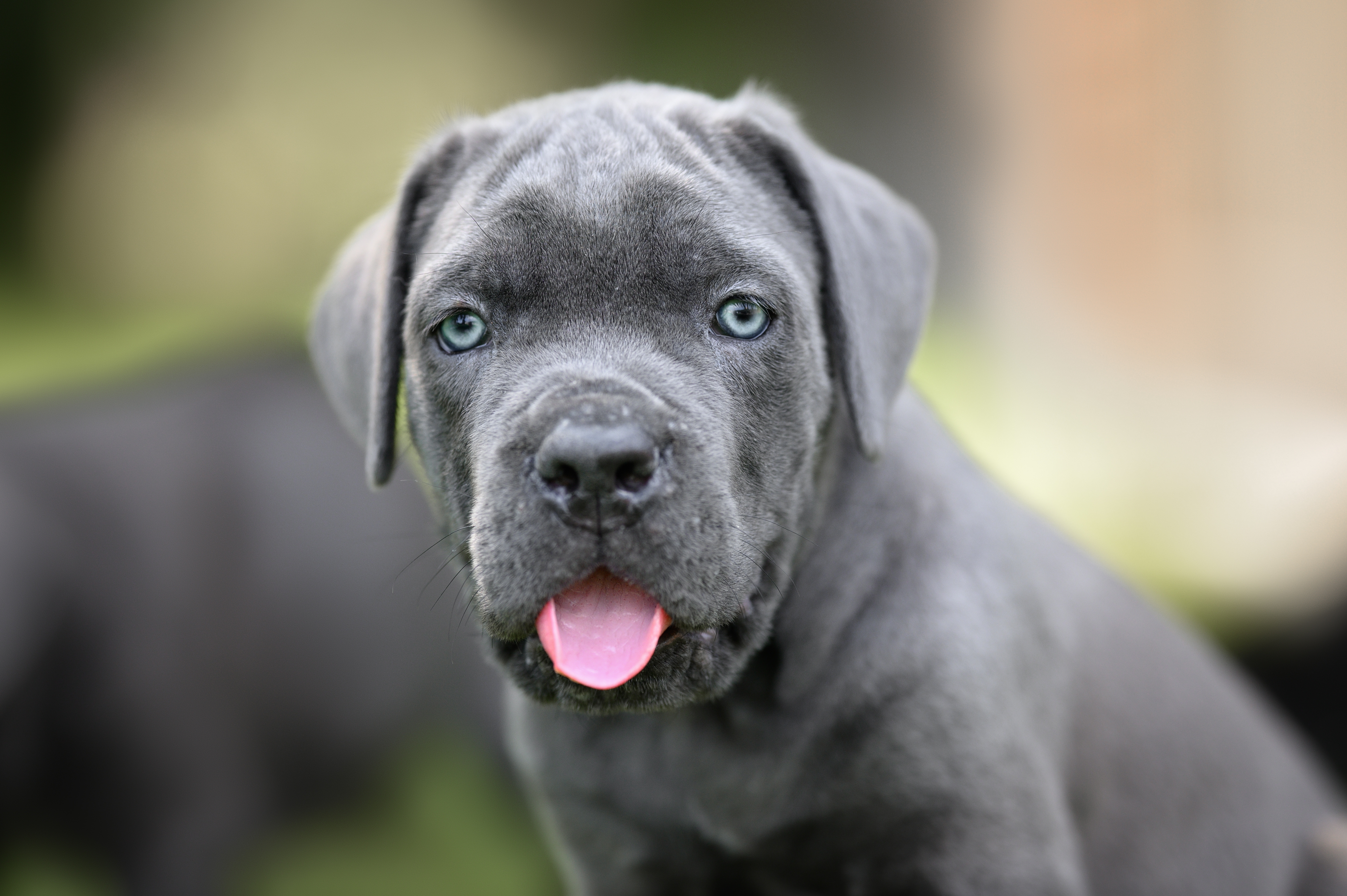
With their powerful physique and unwavering loyalty, Cane Corsos are amazing guard dogs that demand respect and admiration.
However, a particular physical attribute often steals the spotlight and captures the hearts of those who encounter it – their alluring blue eyes.
The Cane Corso’s eyes are a striking and relatively uncommon characteristic within the breed, bringing an air of mystery to these already magnificent canines.
We dig deep, trying to uncover the Cane Corso eye color secrets, exploring the intriguing origins and distinctive genetics that underlie this beguiling trait.
Introduction to Blue-Eyed Cane Corsos
In the world of Cane Corsos, a dog breed celebrated for its loyalty and strength, there exists a captivating trait that often goes unnoticed but never fails to leave a lasting impression – their blue eyes.
Cane Corso`s blue eyes are a rarity within this breed, adding an element of charm to their already imposing presence. They serve as a visual testament to this breed`s genetic diversity, with each pair of blue eyes telling its own story.
Whether they boast a lighter shade reminiscent of the sky on a clear day or appear as deep sapphire pools, their eyes can captivate onlookers and convey a sense of depth that transcends the physical world.

Beyond their aesthetic appeal, Cane Corso`s blue eyes hold a mirror to the breed`s inner world. They reflect the loyalty, intelligence, and emotional complexity that define these canines.
Origins & Genetics
While blue eyes in canines are typically more related to breeds such as the Australian Shepherd or Siberian Husky, their presence in Cane Corsos is an intriguing and rather unique phenomenon.
To better understand the genetics behind their eyes, we must delve into the inheritance patterns of eye color in canines. Eye color is mainly determined by the amount and distribution of melanin, the pigment responsible for skin coloration, hair, and eyes.
In Cane Corsos, blue eyes result from a mixture of genetic factors that influence the production and distribution of melanin in the iris.
Merle Gene Influence
One significant factor affecting blue eyes in Cane Corsos is the very presence of the merle gene, a genetic variation that can result in a wide variety of eye and coat colors. Merle canines often display a marbled or speckled coat pattern; this specific gene can result in blue eyes in certain situations.
However, not all merle Cane Corsos will have blue eyes, and the extent of merling can vary from one canine to another.
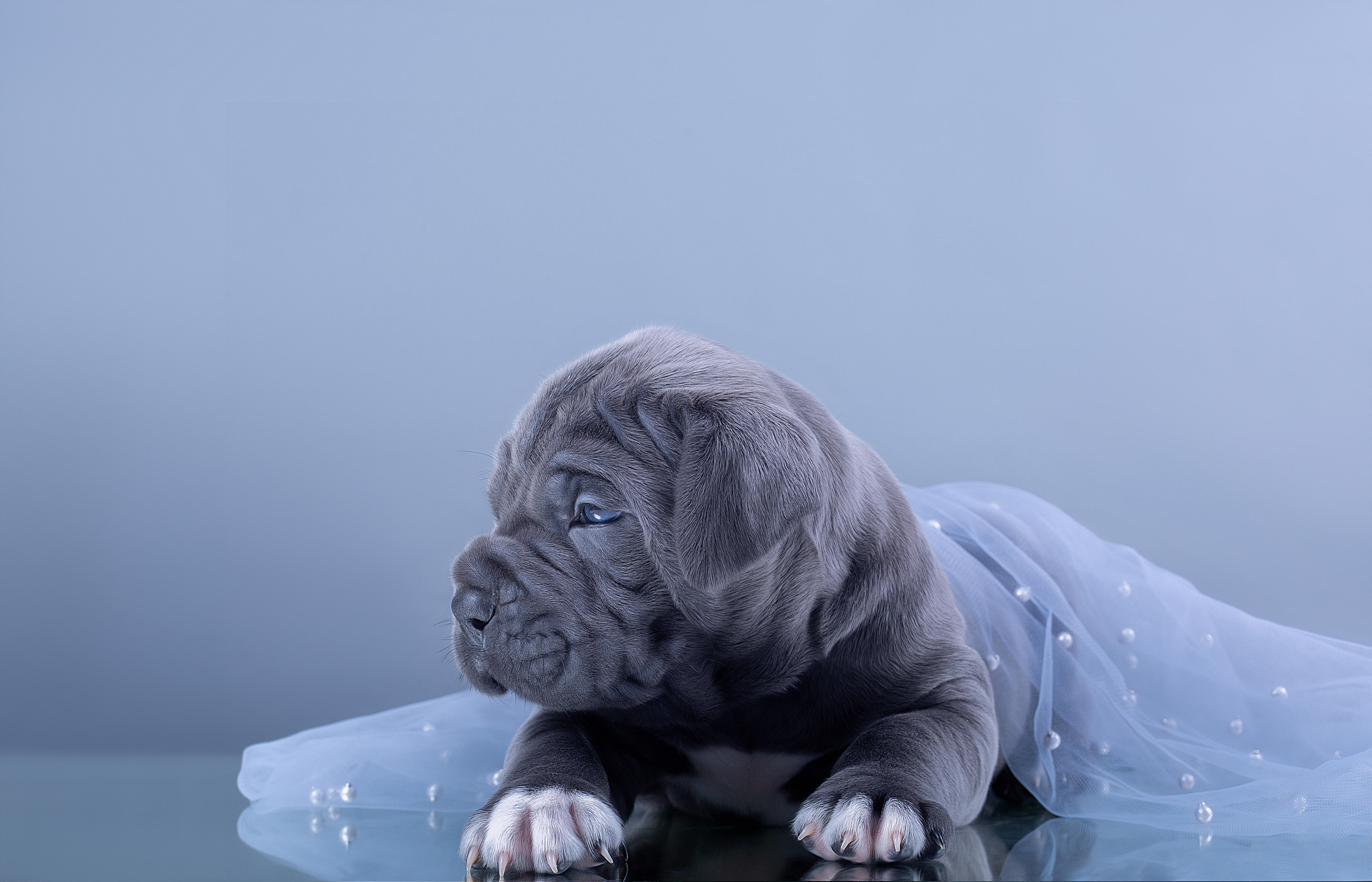
Dilution Gene Impact
In addition, the dilution gene, responsible for creating lighter coat colors, can also have an influence on eye color. When this gene is present, it can contribute to the development of blue eyes, specifically when mixed with the merle gene.
Variability in Blue Shades
Blue-eyed Cane Corsos can display many blue eyes shades, from deep sapphire blue to light, sky-blue reminiscent of a clear day. The variation in eye color adds to the allure and uniqueness of each individual canine.
Health Considerations
While blue eyes in these dogs are sometimes linked with particular health concerns, it`s crucial for dog owners to make a priority on the dog`s overall eye health. Regular visits to the local veterinary clinic and a proper eye care approach can aid in maintaining the vibrancy and health of these captivating eyes.
Emotional Impact of Blue Eyes
Beyond the genetic origins of blue-eyed Cane Corsos, their amazing trait hold a special place in the hearts of canine enthusiasts. The emotional connection between these dogs and their owners often centers on the sense of loyalty, depth, and intelligence reflected in these eyes.
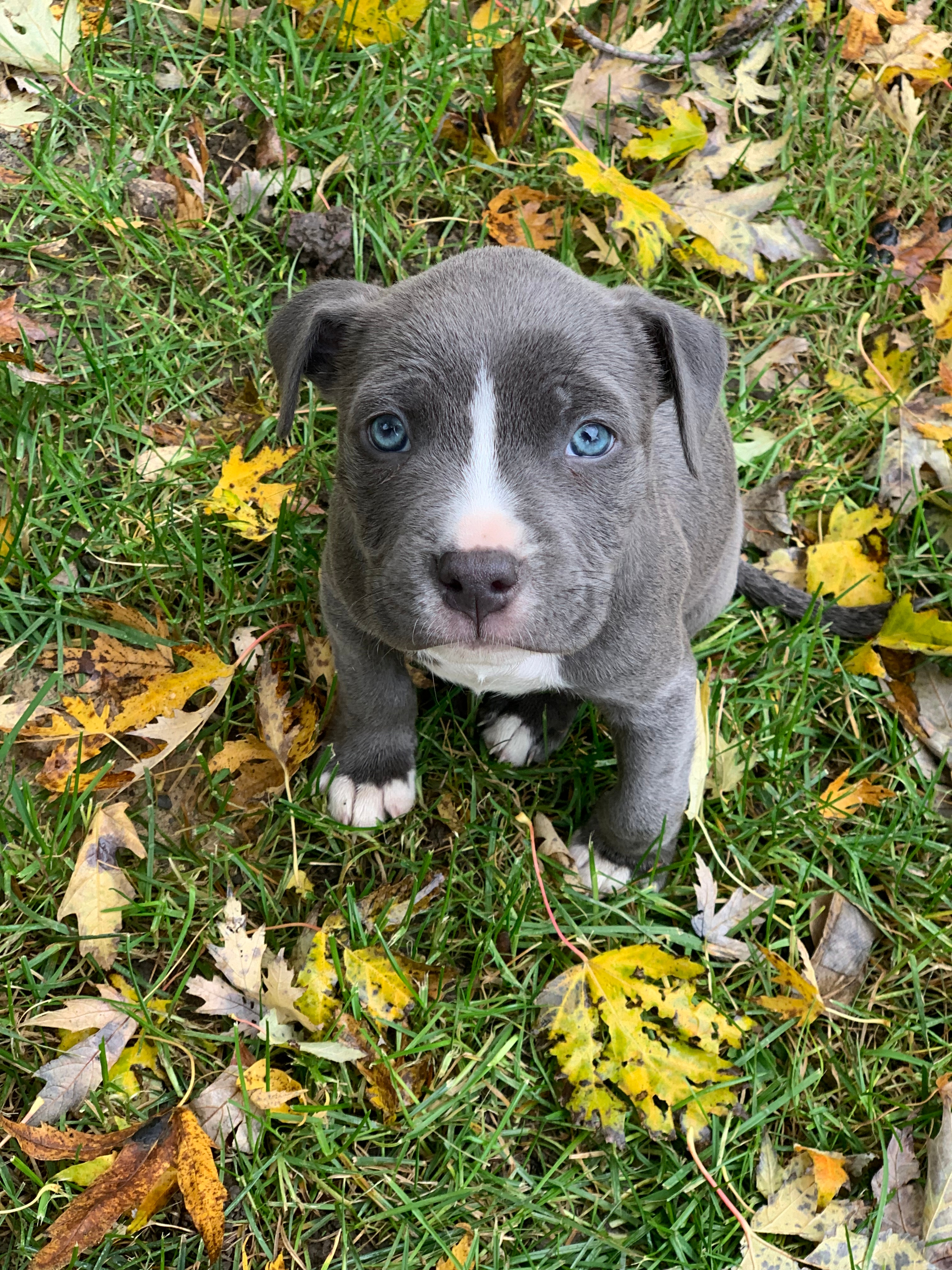
Puppyhood: When Cane Corso Blue Eyes First Appear
Puppyhood is a magical time when the innocence and wonder of a dog`s early life unfold, and it`s just about this period of time when we can witness the enchanting emergence of their blue eyes. These striking blue orbs don`t appear at birth but develop gradually as the puppies grow and mature.
When Cane Corso pups are born, their eyes are normally closed, and they rely on their sense of touch, smell, and hearing to navigate their world. It`s only around the age of two weeks that their eyes start to open, revealing the first stages of their eye color. Their eyes might seem hazy or indistinct at this point, making it challenging to discern their final color.
Their blue eyes’ true development and coloration become more evident as the pups age. Their blue hue intensifies by reaching 6 to 8 weeks and takes on its distinctive shade. During this pivotal period, dog breeders and owners find themselves by the evolving beauty of their pup`s eyes.
It`s important to note that not all Cane Corso puppies will have blue eyes. While some might inherit the genetic characteristics of blue eyes and gradually display this amazing feature, others might develop gold eyes, brown eyes, or lighter shades or darker shades of different eye colors that are more common within this breed.
Maturation & Development of Blue Eyes in Cane Corsos
The maturation and development of blue eyes in Cane Corsos is a fascinating process that unfolds as these pups grow into adulthood. While not all dogs of this breed will have these captivating eyes, acknowledging the timeline and progression of their eye color can be quite intriguing for those who do.
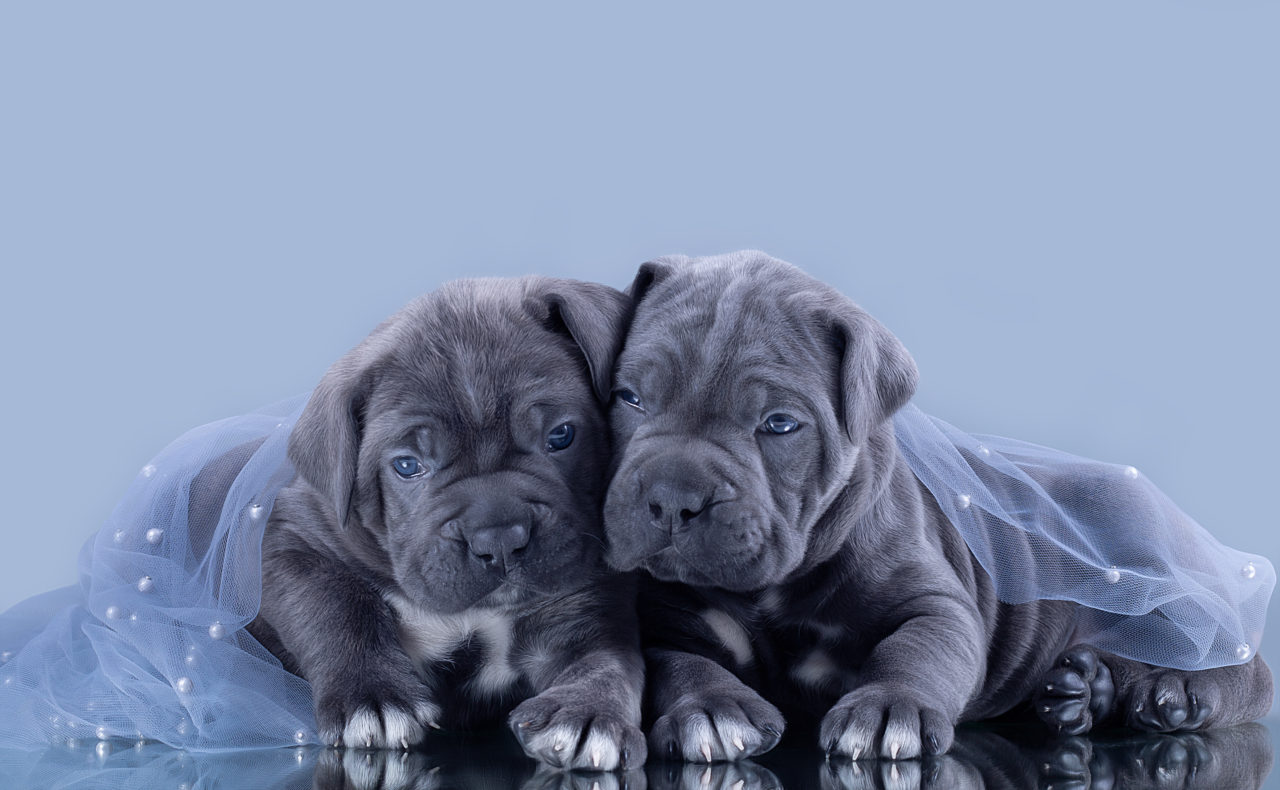
- Newborn Stage – Cane Corso pups are normally born with closed eyes, like most other breeds. At birth, their eyes are still developing, and they rely on their sense of touch, smell, and hearing to navigate their world.
- Eye Opening – Around two weeks old, puppies of this breed start opening their eyes for the very first time. At first, their eyes might seem hazy, and no particular eye color is discernible for now. During this early stage, the eyes are sensitive and adjust to light.
- Progressive Clarity – As the weeks pass, their eyes develop. The initial haziness gradually dissipates, revealing the evolving coloration. Blue eyes, if they are to appear, normally become more evident during this specific time, although the shade might vary from one puppy to another.
- Six to Eight Weeks – Around this period, their blue coloration becomes more distinct. This is an essential stage where dog breeders and owners often notice the enchanting beauty of these blue eyes as they reach their full potential.
- Adulthood – The final coloration typically stabilizes as the pups enter adulthood. Depending on the individual canine, the eyes` hue might range from a sky-blue shade to a deep sapphire blue.
The maturation of blue eyes in these canines adds an element of wonder to their early life stages and contributes to their unique charm as a breed.
Caring for Blue-Eyed Cane Corsos: Health & Maintenance
Caring for Cane Corso’s blue eyes involves attention to their overall eye health and specific considerations for maintaining their amazing appearance.
While these blues can be captivating, they aren`t inherently more fragile than eyes of other colors. Here are some essential tips to consider in terms of health and maintenance.
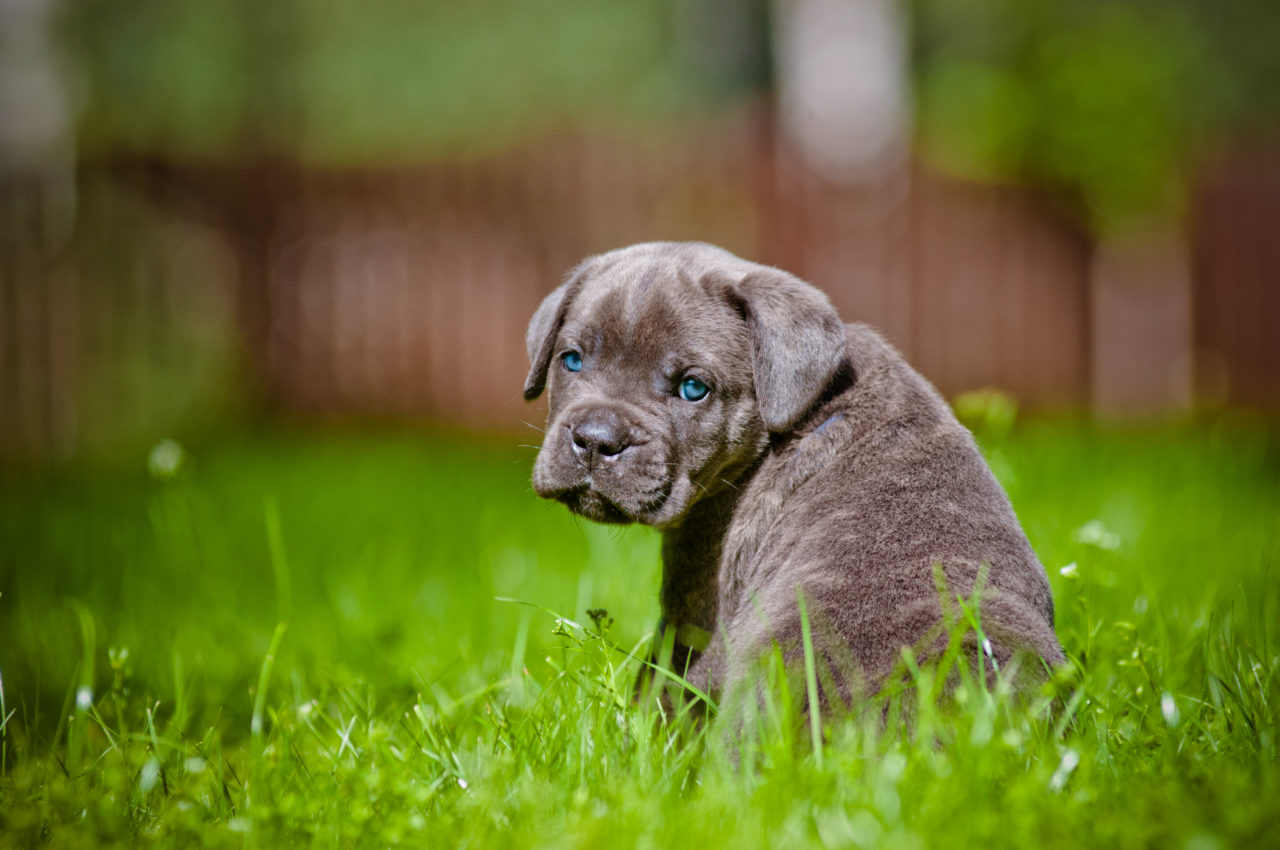
- Regular Vet Check-Ups – Schedule routine veterinarian visits to check your dog`s overall eye health. A vet can find and address any problems early, ensuring optimal eye care.
- Gentle Cleaning – Occasionally, clean the area around your canine`s eyes with a damp, clean clothing material to remove any debris or discharge. Do it gently to avoid any irritation.
- Watch for Red Flags – Pay attention to signs of eye issues, like redness, cloudiness, excessive tearing, or squinting. If you see any of these problems, contact your vet promptly.
- UV Protection – As humans, canines can be quite sensitive to UV rays. If your Cane Corso spends much time outside, specifically in bright sunlight, consider seeking shade during peak sun hours or offering eye protection, like doggy sunlight.
- Avoid Irritants – Prevent your dog from exposure to potential eye irritants like smoke, pollen, or dust. They can lead to eye discomfort or, worse, infections.
- Proper Nutrition – Ensure your little pal`s diet includes vital nutrients, including the ones that promote eye health, like antioxidants and vitamin A. Contact your veterinarian for dietary recommendations.
- Avoid Harsh Chemicals – When cleaning your home, avoid using harsh chemical substances near your canine`s living areas, as they can irritate their eyes.
- Prevent Trauma – Be cautious to prevent any physical eye trauma, specifically during play or while engaging in activities involving flying objects or rough terrain.
- Maintain a Clean Living Environment – Keep your dog`s living area clean and without any potential eye irritants such as mold or dust.
- Address Allergic Reactions – If your Cane Corso has any allergic reactions that affect their eyes, work with your vet to identify and manage allergens and symptoms.
Note that the key to caring for this amazing trait of theirs is vigilant monitoring and prompt action if you notice any problems.
Evolutionary Perspective
Advantages
- Camouflage – In particular environments, specifically snowy or icy areas, blue eyes might offer an advantage in camouflaging the canine`s gaze. This can make it much easier for them to avoid predators or stalk prey.
- Heterochromia – Some blue-eyed Cane Corsos might also have heterochromia, a condition where each eye has a distinct color. This unique physical trait could possibly intimidate or even confuse other animals, making them less likely to engage in a confrontation.
- Visual Acuity – These canines might have better visual acuity in low-light conditions. This could be advantageous for scavenging or hunting during dawn or dusk when visibility isn`t great.
Disadvantages
- Sun Sensitivity – Often, blue eyes are sensitive to sunlight because of lower melanin levels. In environments with intense UV radiation, canines with blue eyes may be more predisposed to eye discomfort or damage.
- Reduced Night Vision – Blue eyes might provide better vision in low light compared to lighter-colored eyes, but they may still be less efficient for night vision than darker eyes. This could be a downside for nocturnal activities.
- Predator Attraction – In certain cases, blue eyes may attract the attention of competitors or predators. Bright blue eyes could make a Cane Corso more noticeable, potentially making it a target in specific ecosystems.
It`s essential to remember that these advantages and disadvantages aren`t only speculative and depend on various factors, including the canine`s behavior, genetic traits, and environment. The evolutionary significance of blue-eyed Cane Corsos is still a topic of research and debate. – Click for more!
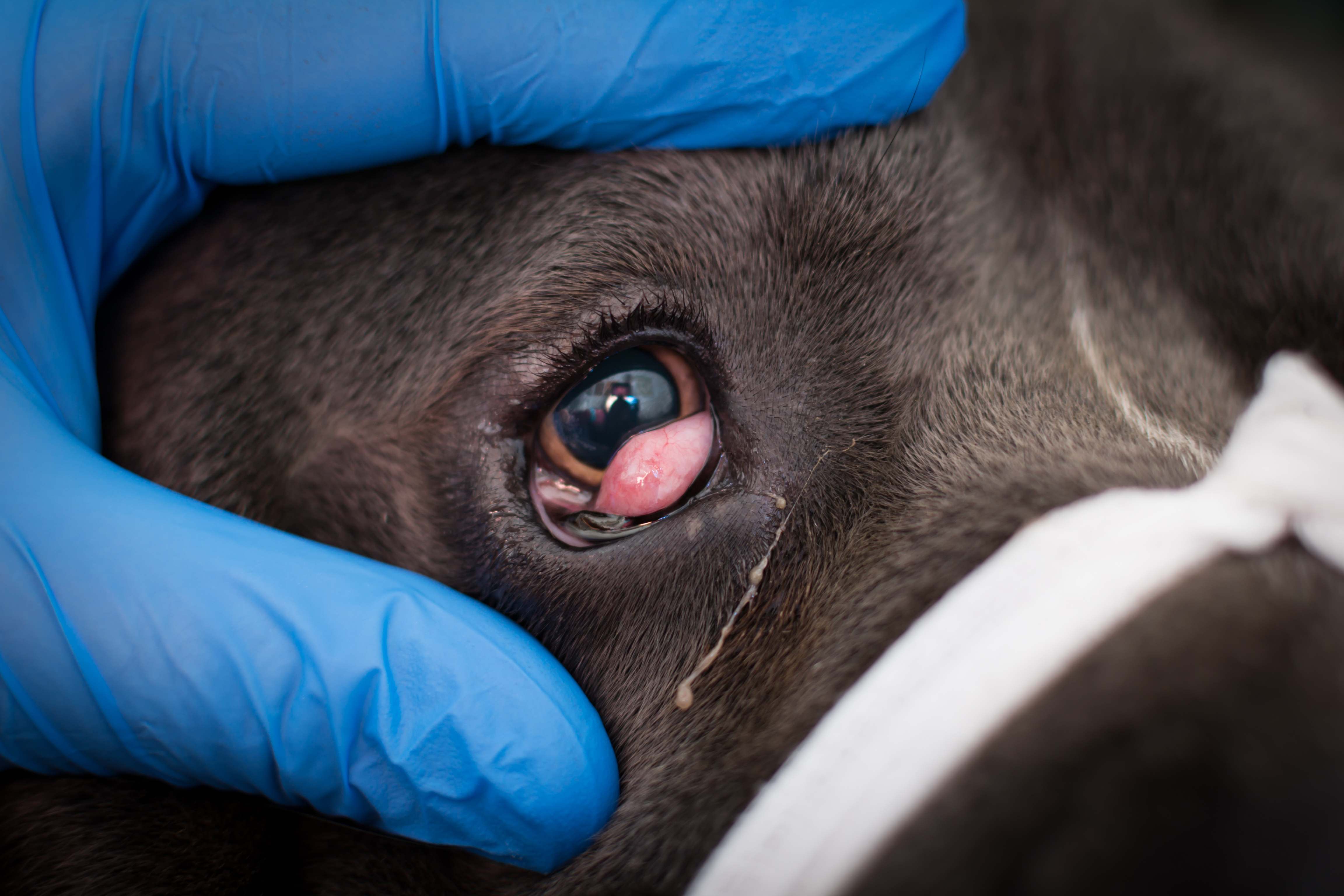
Common Myths & Misconceptions
It`s already established that Cane Corso`s blue eyes are captivating, no doubt there; however, they also become the topic of various myths and misconceptions. Let`s debunk some of these misconceptions and set the record straight:
- All Blue-Eyed Cane Corsos Are Rare: While these dogs are relatively rare if we are to compare them with other breeds, they aren`t that uncommon within the actual breed. The prevalence of blue eyes in this breed can vary widely depending on genetic factors; however, this isn`t a super rare trait.
- Cane Corsos with Blue Eyes Are Less Intelligent: This misconception has no base. The eye color of these Cane Corsos has no bearing on their trainability or intelligence. Actually, these canines are popular for their smartness and can easily excel in training with proper consistency and approach.
- Blue Eyes Indicate Aggression: One of the most common myths is that blue-eyed Cane Corsos represent a sign of aggression. This isn`t true! Eye color has no direct correlation with the behavior or temperament of the canine. A dog`s behavior is shaped by several factors, such as socialization, genetics, and upbringing.
- Blue Eyes Are a Health Concern: Their blue eyes are often mistakenly linked with health issues. In reality, their eyes’ color doesn’t indicate any health problems. Still, it`s crucial to prioritize overall eye health to prevent any possible issues, regardless of eye color.
- Blue-Eyed Cane Corsos Are Less Loyal: Loyalty is a defining attribute of this breed, and it isn`t affected by eye color in any way. Cane Corsos with blue eyes can be just as devoted and loyal to their close ones as Cane Corsos with dark brown eyes, red eyes, or yellow eyes.
- Blue Eyes Fade with Age: Some people believe that their blue eyes change color or fade as the canine ages. While a pup`s eyes might appear hazy when they first open their eyes, the final blue-color eyes normally stabilize as the canine matures.
- Cane Corsos with Blue Eyes Are More Aggressive & Less Friendly: There`s no evidence whatsoever to prove that these Cane Corsos are less friendly or even more aggressive than their counterparts with distinct eye colors. A mixture of socialization, training, and, more importantly, genetics affects a canine’s behavior.
Blue-eyed Cane Corsos are a unique dog breed with amazing physical traits, but they shouldn`t be the basis for assumptions about the canine`s intelligence, behavior, or health.
These myths and misconceptions should be dispelled to admire the individuality of each particular dog, regardless of the color of their eyes.
In Closing
Overall, the enigmatic beauty of Cane Corso`s blue eyes is a testament to the captivating nature of this astonishing dog breed. Though relatively rare within the Cane Corso community, these striking eyes add an additional allure to their presence.
This journey uncovered all the details about the origins, genetics, evolutionary significance, and development related to this breathtaking trait of Cane Corsos. They remind us of the emotional complexity and a nice touch of intelligence and loyalty that make this dog an exceptional canine companion.
